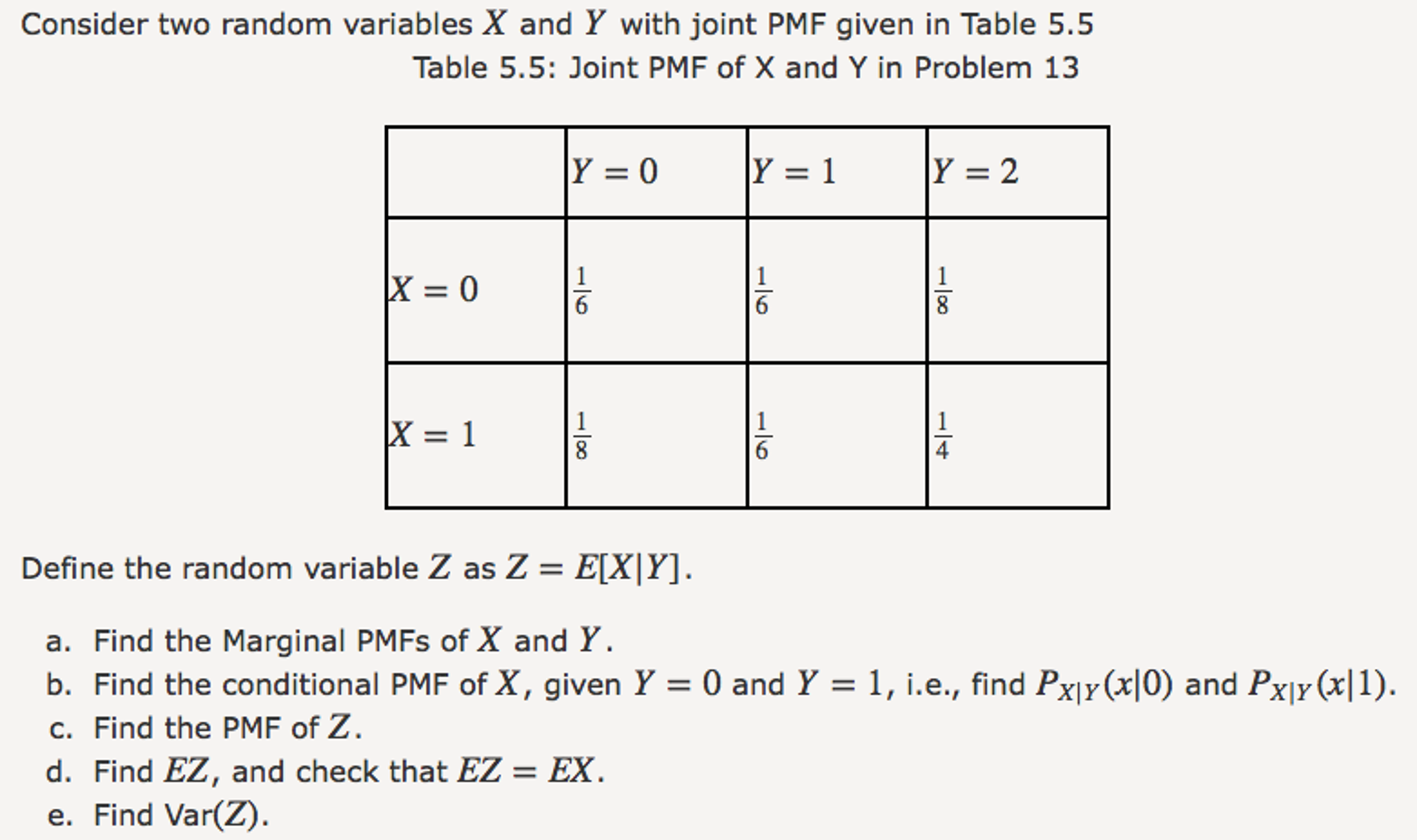Var X+Y - Variable ''X'' by zixmix on deviantART - How could the method of moments be used to estimate α?
Var X+Y - Variable ''X'' by zixmix on deviantART - How could the method of moments be used to estimate α?. The variance of random variable x is the expected value of squares of difference of x and the expected value μ. Since x and y are not independent, we are using this formula: + e(y 2) − µ2y = var(x) + 2 cov(x, y ) + var(y ). Var x, y = 'foo'; If x and y are independent, e(xy ) = e(x)e(y ) and cov(x, y ) = 0.
What is var(x+y+z) if the variables are dependent? I have worked out var(x+y) using var(x) + var(y) + 2cov(x,y). Var (cx ) = c2var (x ), where c is a constant. The variance of random variable x is the expected value of squares of difference of x and the expected value μ. Variance of independent random variables.

In probability theory and statistics, variance is the expectation of the squared deviation of a random variable from its mean.
In words, the formula for var(x) says to take a weighted average of the squared distance to the example 2. You did not specify whether x and y are independent so tis is as far as one gets. Covariance is linear in each coordinate. I know this may seem like a silly or redundant question, but if i'm curious about something, why not ask? Since x and y are not independent, we are using this formula: • note that the product formula for mgf's involves the sum of two independent r.v.'s, not the the reason behind this is that the denition of the mgf of x + y is the expectation of et(x+y ), which is. //z is initialized and assigned the value of y(7). I've seen it but i don't understand it. X and y are uncorrelated if cor(x, y ) = 0. Most of these follow easily from corresponding properties of covariance above. What equation does the mle of α satisfy. //y is initialized and assigned the value of x(7), and then x is increased to 8; Adding a+b yields 5var(x)+5var(y)=15 so var(x)+var(y)=3.
Covariance is linear in each coordinate. Let x=x(s) and y=y(s) be two functions each assigning a real number to each s∈s. Variance of independent random variables. What equation does the mle of α satisfy. If x , y , z ,.

From the definition of the variance we can get.
Next we will establish some basic properties of correlation. Let's look at an example to better understand $ey$. For each random variable x, y , z, and w plot the pmf and compute the mean and variance. This is an unbiased estimator of the variance of the. #var(x+y) = var (x) + var (y) #. What equation does the mle of α satisfy. Let s be the sample space associated with a random experiment e. Suppose x and y are independent random variables. I am working on a problem from probability theory and am a little bit stuck. The variance of random variable x is the expected value of squares of difference of x and the expected value μ. Corr(x,z) given corr(x,y) and corr(y,z). Var x, y = 'foo'; Most of these follow easily from corresponding properties of covariance above.
//y is initialized and assigned the value of x(7), and then x is increased to 8; Var(x) = (.10)(1 − 2.7) hint: If x , y , z ,. First, you can pass constants through either coordinate If x and y are independent, e(xy ) = e(x)e(y ) and cov(x, y ) = 0.

Covariance is linear in each coordinate.
From the definition of the variance we can get. Let s be the sample space associated with a random experiment e. X and y are more positively correlated, the closer. There is another formula for var(y) that is sometimes useful in computing variances or proving (and say it in words!) conditional variance as a random variable: Then (x,y) is called a two dimensional random. Most of these follow easily from corresponding properties of covariance above. As with e(y|x), we can consider var(y. //x is initialized and assigned the value 7 var y = x++; (a) find var(x) and sd(x), the variance and standard deviation of x. Corr(x,z) given corr(x,y) and corr(y,z). Var x, y = 'foo'; I know this may seem like a silly or redundant question, but if i'm curious about something, why not ask? Suppose x and y are random variables such that p(x,y)=1/3, var(x) = 9 and var(y) = 1.
Komentar
Posting Komentar